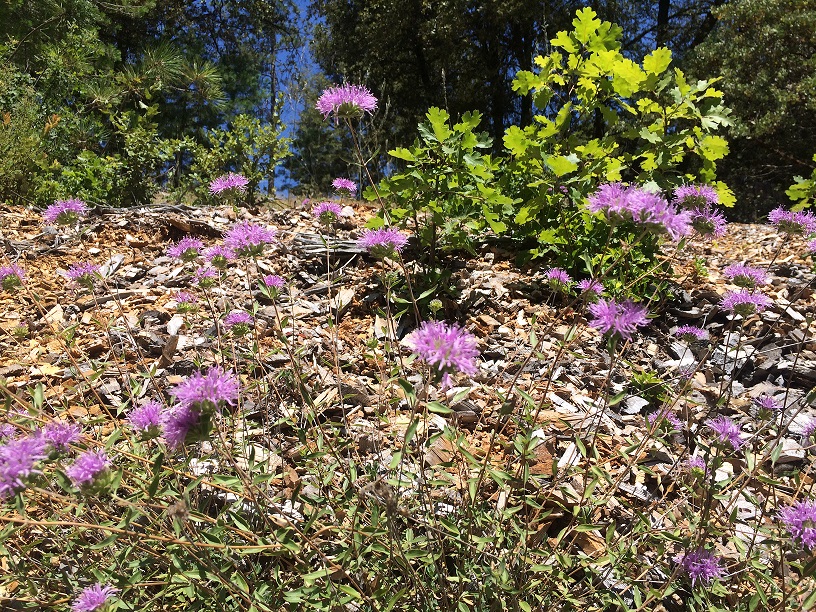

Photo copyright © 2019 Mariposa Native Plants
A native perennial herb, with pink or lavender flowers on long stems. Coyote Mint is a very fragrant plant, growing amongst gaps in chaparral, in coastal sage scrub, and in ponderosa pine forest clearings. In Mariposa County, M.villosa is winter deciduous, but it can survive long into the winter in the lower foothills.
M.villosa is found throughout the mountains surrounding the Central Valley, from Ventura north to Oregon along the coast, into the mountains north of Redding, and down through the western Sierra Nevada foothills and front range south to Bakersfield. Elevation: sea level to 9,000 ft. (2700m). Sun: full or partial. Temperature: cold tolerant to 15°F (-10°C). Soil: clay, sandy, serpentine, or saline; prefers a slightly acidic soil, pH 5-7.
Easy to care for once established. Needs a site that is medium-well drained; moisture can persist for a few days after watering. Roots are sensitive to disturbance; avoid breaking the root ball when planting from the container. Water the plant (1 gallon, 4 liters) once per week until the first winter rains. Water once per month, same amounts, in the second summer. Thereafter, no supplemental water is required.
M.villosa is a host plant for a number of butterflies and moths, including the Shasta Pyrausta moth and the California Pyrausta Moth. It's a good choice for pollinator gardens, attracting bees, birds, and hummingbirds.
Deer: Do not browse on Coyote Mint.
Native Americans and early settlers steeped Coyote Mint to produce a very fragrant and soothing mint tea.
Native American herbalists used Coyote Mint decoctions to relieve upset stomachs, treat respiratory conditions, and alleviate soreness of the throat.
#1 container, about 1 gallon